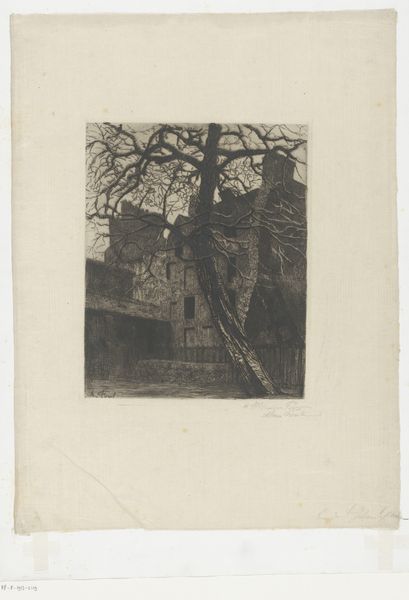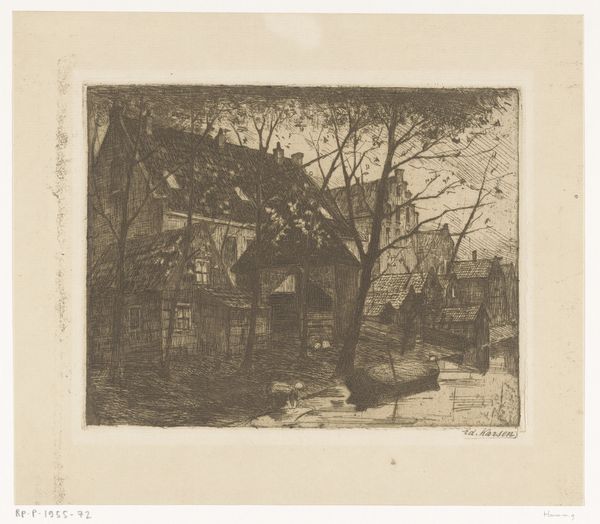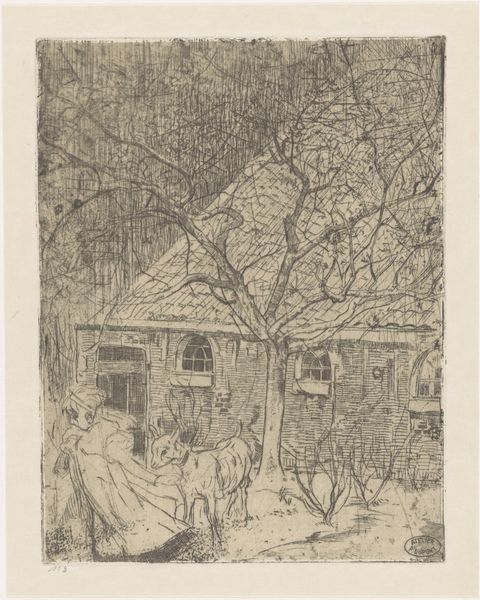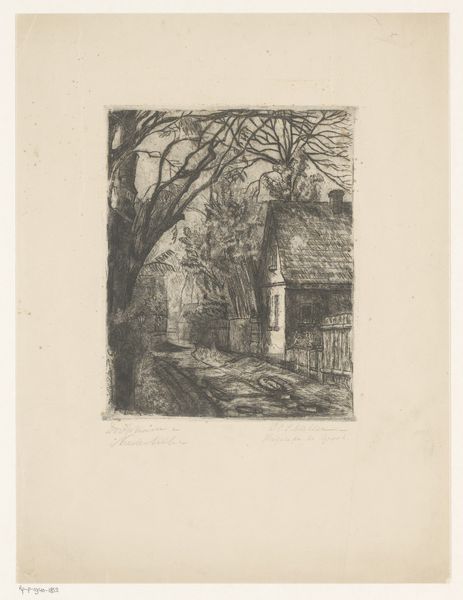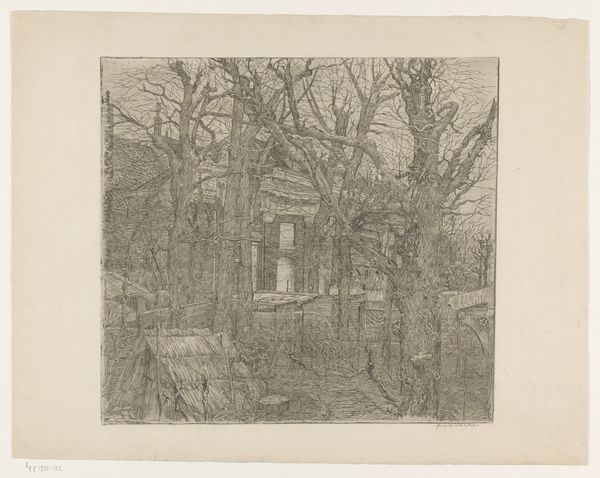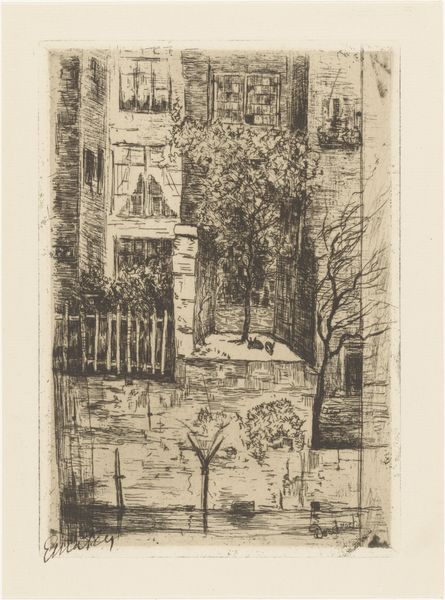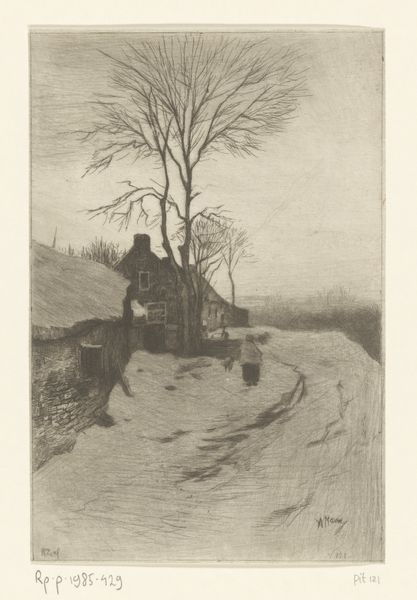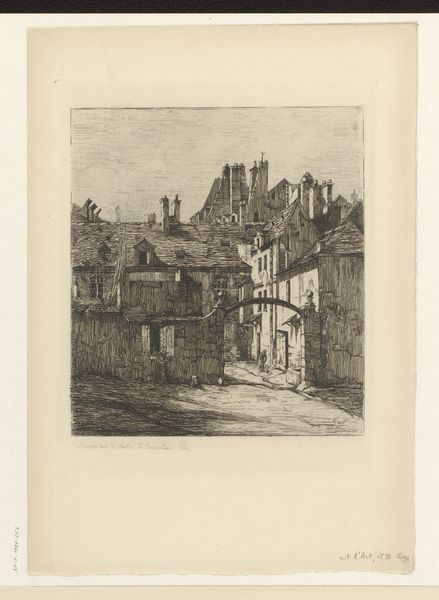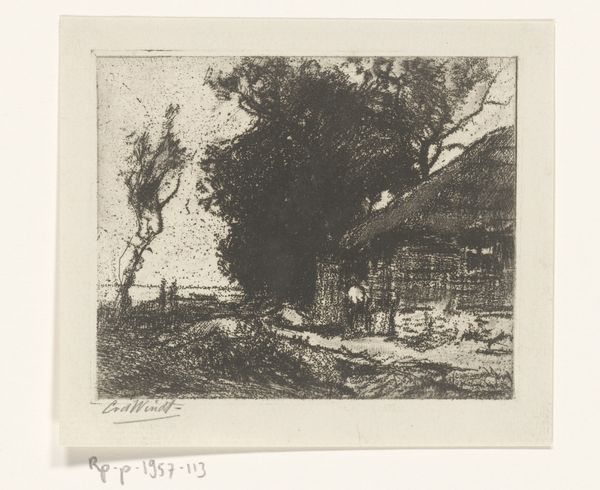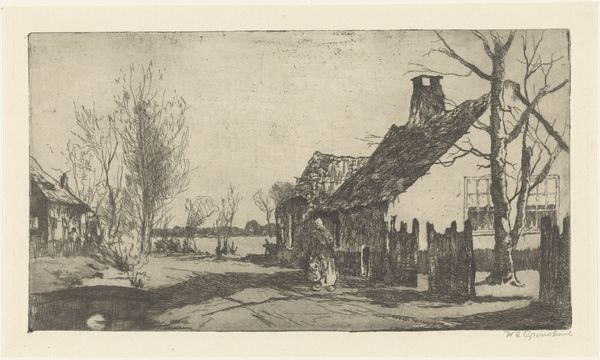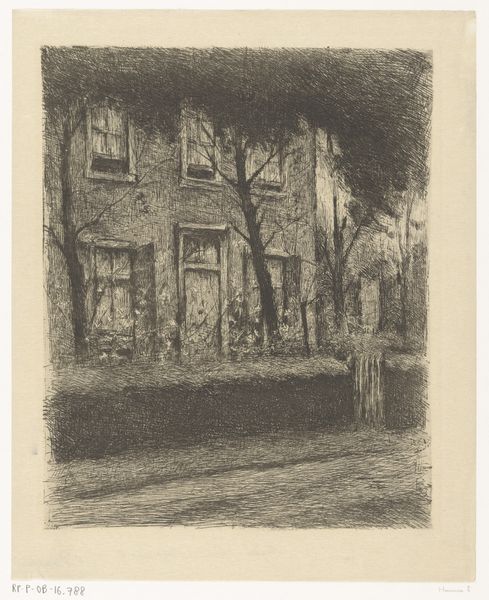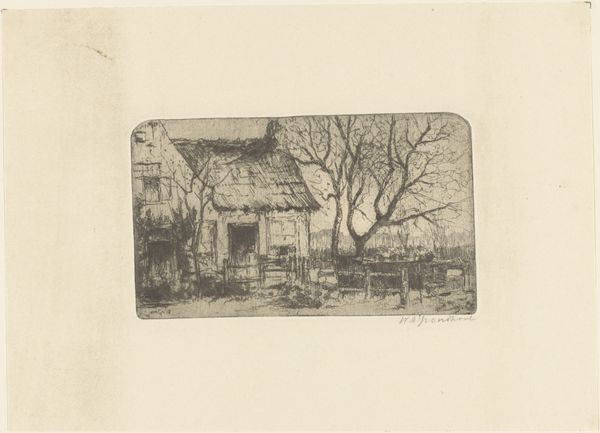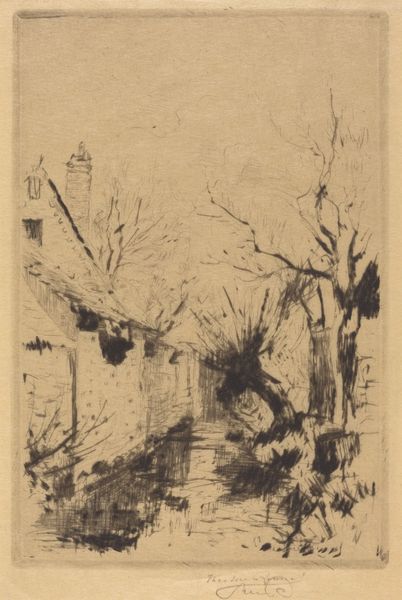
etching
#
impressionism
#
etching
#
landscape
#
etching
Dimensions: height 109 mm, width 79 mm
Copyright: Rijks Museum: Open Domain
Philip Zilcken etched this view of a house from the backyard in the late 19th or early 20th century. Dominating the scene is the stark, bare tree in the foreground, its branches like reaching fingers against the solid geometry of the house. This motif of a tree, especially when barren, carries a potent symbolism through time. Think of the Tree of Knowledge in Genesis, laden with fateful choices, or the desolate trees in Romantic landscapes, mirroring the soul's turmoil. The barren tree reappears frequently, symbolizing loss, the passage of time, or a period of dormancy. Even in the modern era, we see echoes of it in surrealist art, where a lone tree can represent existential isolation. The house itself is a powerful symbol of shelter and the subconscious. Both the tree and house combined evoke a sense of stark vulnerability, as if the bare soul is laid open to the elements. This primal connection engages viewers on a deep, subconscious level, evoking feelings of melancholic introspection. It's a dance of symbols that will continue to resurface and evolve.
Comments
No comments
Be the first to comment and join the conversation on the ultimate creative platform.
